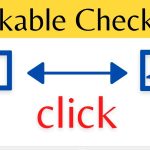Optimizing your dealership website is crucial in today’s digital world. In the past, car dealerships relied heavily on traditional marketing methods such as TV, radio, print ads, direct mail, and yellow page listings to attract customers. However, in the present scenario, your website can play a key role as a sales representative for your business, provided it is optimized effectively. By leveraging the power of SEO for car dealers, you can drive more traffic to your website, generate quality leads, and ultimately increase your sales. I’ve worked with dealerships of all sizes – from small family-owned stores with just a dozen employees to big auto groups with multiple rooftops around the state. I’ve seen firsthand how dramatically a dealership’s online visibility and foot traffic can increase when we make some key technical improvements to help search engines better understand and prominently display their website.
This is something I specialize in – it’s called search engine optimization (SEO) and it’s more important than ever for car dealers today.
I’ll walk you through some of the most important technical website enhancements your dealership can make to capitalize on the power of SEO for car dealers. Consider it a roadmap to drive more high-quality leads and sales to your online showroom.
Let’s get started!

Speed Up Website Performance
Think of your website as the front door to your dealership’s showroom. You want it to open quickly and make a great first impression on visitors. But a slow-loading site has the opposite effect – it frustrates visitors and causes them to click away.
Plus, website speed has actually become a factor search engines like Google consider when ranking pages in their search results. So optimizing performance should be priority #1.
Here are three things you can do to accelerate your website performance:
★ Enable GZIP compression on your web server – this “shrinks” files so they transfer faster. Just have your webmaster configure the Apache or Nginx settings.
★ Optimize images – compress JPGs, PNGs, and GIFs and resample large images to smaller file sizes. This reduces bandwidth strain. Use a tool like Kraken.io for batch optimization.
★ Minify JavaScript and CSS files – this removes unnecessary code characters to streamline code. Your webmaster can handle the minification process – just have them enable it.
Follow these best practices and your website will load at blazing fast speeds – keeping visitors engaged.
Improve Technical SEO Fundamentals
Now that we’ve made sure your site loads quickly, let’s discuss some technical SEO best practices. These “under the hood” enhancements will help search engine crawlers better understand your website’s structure – ultimately helping to lift your visibility in search results.
★ Update website copy – Make sure page titles, meta descriptions, headings and body content include relevant keywords searchers are using to find dealers like yours. This gives crawlers more semantic signals about relevancy.
★ Fix broken links – Search engines penalize sites with lots of broken external or internal links so address 404 errors. Use a tool like ScreamingFrog to identify breakages.
★ Expand alt text – Include descriptive alt text on all image tags – describing the image content. This helps image SEO. For new images, have your webmaster add alt text tags.
★ Update robots.txt file – Check that search crawler bots have access to all pages you want indexed, if not update permissions. Your web admin handles this.
★ Canonicalize duplicate content – If you have similar pages or content, add canonical URL tags to signal the original source page. Avoid duplicate content issues.
★ Create an XML site map – A sitemap helps search bots discover new and updated content by providing a site index. Login to your Google Search Console account and generate one.
★ Implement Structured Data – Introduce schema markups like JSON-LD to highlight key data like address, inventory, prices, etc. This amplifies snippets. Use Google’s Structured Data Testing Tool.
★ Check site security – Make sure you have an SSL certificate installed and force HTTPS URLs. Insecure sites get lower rankings. Confirm your site’s security status with tools like OpenSSL.
That covers the technical SEO essentials – things like optimizing copy, fixing technical errors, and improving accessibility and architecture. Execute this checklist and your site will be much better positioned.
Optimize for Local Search Visibility
Most car buyers search for dealers in their local area. So excelling at local SEO is mission-critical.
When optimizing for local search, you want to signal proximity relevance in every way possible. Here are some key tactics:
★ City name in title tag – Update your homepage title tag to include the city your dealership is located in like “Best Deals on Cars in Phoenix | A+ Auto”.
★ Address prominently displayed – Include your full dealership address, city, state and zip code prominently on the homepage. Consider adding schema markup here too.
★ Location-specific pages – Develop dedicated pages targeting surrounding cities. Make a page for “Chandler car dealers” if that’s a feeder market. Populate with locally optimized content.
★ GMB profile – Make sure your Google My Business listing has current information like address, phone number, and inventory. This drives the local pack and map listings.
★ Local content – Blog about community events or partnerships with local charities and link to your site. This helps establish area relevance.
★ Local links – Getting listed as the website link on relevant local business directories and review sites helps a lot too. Moz has a great local citation listing tool.
Optimizing your on-page elements to target key geo-intents combined with an amplified local presence across directories and review sites gives your dealership a visibility boost in those critical local search results – where most searches happen and sales are made.
Optimize Site Architecture
As your website grows to potentially hundreds or thousands of pages, having a well-structured information architecture becomes important not only for usability but for SEO too.
Here are some tips on structuring your site in an optimal way:
Logical hierarchy – Organize pages and nested content in a logical hierarchy from broad category pages to deeper product/trim pages in a process flow. Don’t go more than 3 levels deep on category pages though for usability.
Descriptive categories – Have bucket category pages like “ trucks, SUVs, sedans” as parent pages with related child pages nested underneath. Name categories intuitively based on shopper search behavior.
Model-specific pages – Make sure to have a unique page for each vehicle model you sell so content and inventory can be isolated per VIN. Helps search relevancy.
Trim hierarchy – For model pages, ensure proper page structure flowing from model overview page > trim pages > year pages for used or current year > listings.
Dynamic Filtered Pages – Enable filtering and faceting by things like year, make, model, body type etc. Each combo creates a unique page.
Limit orphaned pages – Try to have pages nested under a parent whenever possible versus loose isolated pages. This improves the linkage flow.
Ensuring your site architecture stays lean and structured may not directly influence search rankings, but it forces you to better organize information in a way aligned to search – ultimately enhancing discoverability and conversions. So don’t neglect it.
Incorporate Video
Traditionally, car shopping relied on static brochures, spec sheets, and photos. But video has become a must-have to engage and inform today’s consumers.
Here’s why you need video as part of your SEO strategy:
Brings Vehicles to Life – Video showcases things like legroom space, intuitive tech, and rugged performance better than pictures can. It’s more immersive.
Improves Rankings – Pages with video embedded tend to outperform non-video pages. Crawling video transcripts helps too.
Build Trust – Video hosts visually showing honest commentary build credibility and trust with visitors.
Lengthens Time on Site – Visitors watch 2-3 videos per session on average – keeping them engaged on your site longer.
Drives Conversions – Shoppers that view video are 1.81x more likely to purchase according to Wyzowl. So video pays off.
As far as optimizing video for SEO and maximizing impact, make sure to…
★ Transcribe videos for text crawling
★ Embed videos natively on product pages ★ Create dedicated video category pages ★ Publish engaging explainer and testimonial videos consistently ★ Optimize titles/descriptions for keywords ★ Host natively on YouTube to benefit from its organic visibility
Following these tips and videos will not only boost your SEO impact but also captivate visitors in a more memorable way.
Publish Fresh Useful Content
Your website is essentially a dynamic document. The content you publish plays a big role in signaling topical relevance and expertise to search engines over time.
Here are 5 types of engaging, informative and search-friendly content to incorporate:
News Articles – Covering things like new model launches, dealership events, staff spotlights, market trends, and community stories shows your operation is active.
Blog Posts – Useful posts around things like car maintenance, navigating technologies, shopping tips, and industry news entice visitors.
Vehicle Reviews – In-depth reviews of models along with pro/con discussions and expert ratings give buyers more validation.
Dealership Info Pages – Things like “about our history”, “meet the staff” and “contact/location details” help searchers evaluate your dealership.
Landing Pages – Create dedicated pages around offers like service/repair coupons, season sales events or first responder discounts. These target buyer intents.
Routinely publishing helpful articles like these (10-20 per month) increases the depth your domain has to rank for a wider variety of keywords. So fuel your site with fresh content continuously.
Track Keyword Performance
Now that we’ve put all the technical SEO best practices in place, let’s make sure you have tracking set up to monitor ongoing performance. Here are some key reports to analyze:
Organic Keywords Ranking History – See how many keywords your site is ranking 1-10 organically over time and optimize to increase. Accessible in SEMRush.
Top Landing/Exit Pages – Identify what pages serve entry/exit points most to better optimize funnel flow. Google Analytics has this.
Myriad Local Pack Results – Check your prevalence within Local 3 pack, map pack and knowledge panel listings for geographic searches. Moz Local can audit this.
Site Audit Report – Review critical things like page speed, mobile responsiveness, HTTPS usage, meta tag completeness and more in one spot. SEOptimer has a good tool.
Analyzing these SEO KPIs routinely means you can catch declines that require troubleshooting quickly and spot rising successes to double down on what’s working! Proper tracking ensures your technical SEO strategy keeps delivering returns.

The Road Ahead is Bright
Optimizing your dealership website for technical SEO best practices takes some ongoing effort but really pays off.
By making enhancements to significantly improve site speed, search accessibility, local relevance, video usage and content quality – all centered around how search engines evaluate pages – you make sure your online showroom gets prominently displayed to high-intent car shoppers.
The result is an avalanche of qualified traffic visiting your site and engaging further thanks to the informative and immersive experience you now offer. That traffic converts at higher rates into sales.
So why leave these website enhancements on the back burner any longer? Commit to investing in proper technical SEO and preparations today so your dealership wakes up to a site overflowing with customers tomorrow. The opportunity is accelerating – time to put the pedal to the metal on capturing it!
Frequently Asked Questions
Q: What are some of the first technical SEO issues I should address on my site?
A: The first few quick wins to tackle are 1) Improving website speed by enabling compression, optimizing images etc 2) Fixing any broken links or 404 errors 3) Updating page title tags and meta descriptions to better reflect relevancy 4) Generating an XML sitemap to enhance discoverability. Hit those basic fixes right away for an instant boost.
Q: How much content is recommended for car dealership websites?
A: To strengthen your domain authority and allow targeting across more model/market-specific keywords, aim for 15-25 new pages per month. This can include blog articles, vehicle reviews/comparisons, dealership info pages, offers pages, etc. The key is keeping your site dynamic with fresh content routinely.
Q: How often should technical SEO be evaluated?
A: Technical SEO is not a one-and-done initiative, it requires ongoing optimization and maintenance. Things like website security vulnerabilities, broken links, site speed fluctuations, etc can creep up unexpectedly. Get in a habit of comprehensive quarterly technical SEO site audits to catch any issues proactively. Monthly spot checks of key metrics are smart too.
Q: Is local SEO or organic SEO more important for a car dealership?
A: Because most buyers are searching for local car sellers in their state/city, optimizing your website for maximum visibility within Local Pack and Map results should be the number one priority. But also give proper focus on broader industry-wide terms. Blend both to maximize traffic and conversions.
Q: What’s a cost-efficient way to develop website content routinely?
A: Creating automotive-focused SEO articles and blogs from scratch each month takes substantial time and skill. Consider outsourcing your content writing to an affordable overseas writing firm. They can produce 10-20 high-quality, engaging articles per month for just a few hundred dollars – freeing up your busy team. Just stress original content and SEO optimization when briefing the writing firm on expectations.
Conclusion
Capturing more customers digitally is imperative for car dealerships to accelerate sales in a modern market where online represents the powerful tip of the spear.
That’s why revamping your website to capitalize on technical SEO for car dealers is so valuable. Consider it investing in a round-the-clock virtual salesperson.
The art of SEO for painters: create a masterpiece of online presence unveils the secrets to enhancing your website with clarity and precision. The good news is there’s no mystery anymore around the website enhancements needed to boost visibility. Improving site speed, elevating architecture, optimizing for local intent, and enriching content pays off in the form of prominent SERP placement and more qualified visitors, ensuring that conversion rates rise when the online experience seamlessly aligns with visitors’ expectations.
Stay vigilant to keep your online edge sharp. But soon enough, thanks to the compound impact of technical SEO for car dealers, you’ll have the traffic and customer volume every dealer dreams of!







